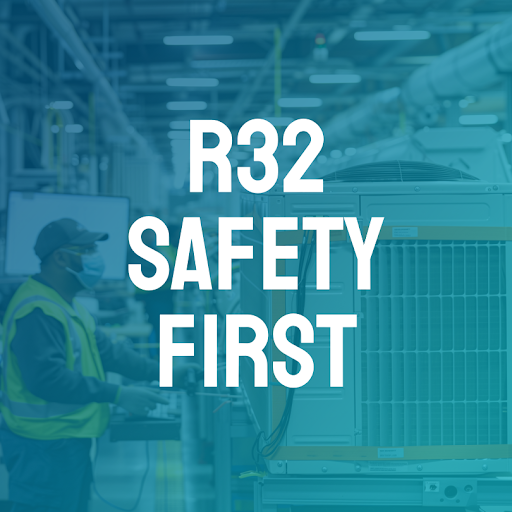As the HVAC industry transitions to more environmentally friendly refrigerants like R32, it's crucial for professionals and consumers alike to understand the proper procedures for handling these substances safely. R32 offers numerous benefits, including improved energy efficiency and lower environmental impact, but it also comes with unique safety considerations. In this blog post, we'll provide essential information on how to handle R32 refrigerant safely to protect yourself, others, and the environment.
Understanding R32 Properties:
R32 is a flammable refrigerant with specific properties that require careful handling and storage. Unlike non-flammable refrigerants like R410A, R32 poses a higher risk of ignition in the presence of an ignition source, such as an open flame or electrical spark. It's essential to be aware of these properties and take appropriate precautions when working with R32 to prevent accidents and ensure safety.
Safety Training and Certification:
Anyone involved in the handling, installation, or servicing of HVAC systems using R32 refrigerant should undergo proper safety training and certification. Training programs provide essential knowledge and skills on how to handle R32 safely, including proper storage, transportation, and disposal procedures. By completing safety training and obtaining certification, HVAC professionals can minimize risks and ensure compliance with safety regulations.

Discover Top-Grade Air Conditioners: View Our Products Today
When working with R32 refrigerant, it's essential to wear appropriate personal protective equipment (PPE) to protect against potential hazards. This includes safety goggles to shield the eyes from splashes or vapors, gloves to protect the hands from contact with the refrigerant, and a respirator to prevent inhalation of potentially harmful fumes. Additionally, wearing flame-resistant clothing and footwear can provide added protection in the event of a fire or ignition.
Safe Handling Practices:
When handling R32 refrigerant, it's crucial to follow safe handling practices to minimize the risk of accidents and exposure. This includes using approved recovery and charging equipment designed specifically for R32, ensuring proper ventilation in work areas to prevent the buildup of flammable vapors, and avoiding smoking or open flames in the vicinity of R32 storage or handling areas. Proper labeling of R32 cylinders and containers is also essential for identifying the contents and communicating potential hazards.
Emergency Response Preparedness:
Despite taking precautions, accidents involving R32 refrigerant can still occur. It's essential to have an emergency response plan in place to address potential leaks, spills, or fires promptly and effectively. This includes having access to fire extinguishers and emergency shut-off valves, as well as knowing how to evacuate the area safely in the event of a hazardous situation. Regular drills and training exercises can help ensure that personnel are prepared to respond to emergencies involving R32 refrigerant.
In conclusion, safety is paramount when handling R32 refrigerant in HVAC systems. By understanding the properties of R32, undergoing proper safety training, wearing appropriate personal protective equipment, following safe handling practices, and being prepared to respond to emergencies, HVAC professionals can minimize risks and ensure the safe and responsible use of R32 refrigerant. By prioritizing safety, we can enjoy the benefits of R32 while protecting ourselves, others, and the environment from potential hazards. If you’re looking for an R32 product coming soon we suggest the Goodman 3 Ton 16.4 SEER2 R32 Air Conditioner Condenser.







